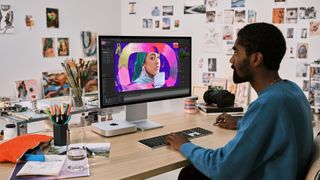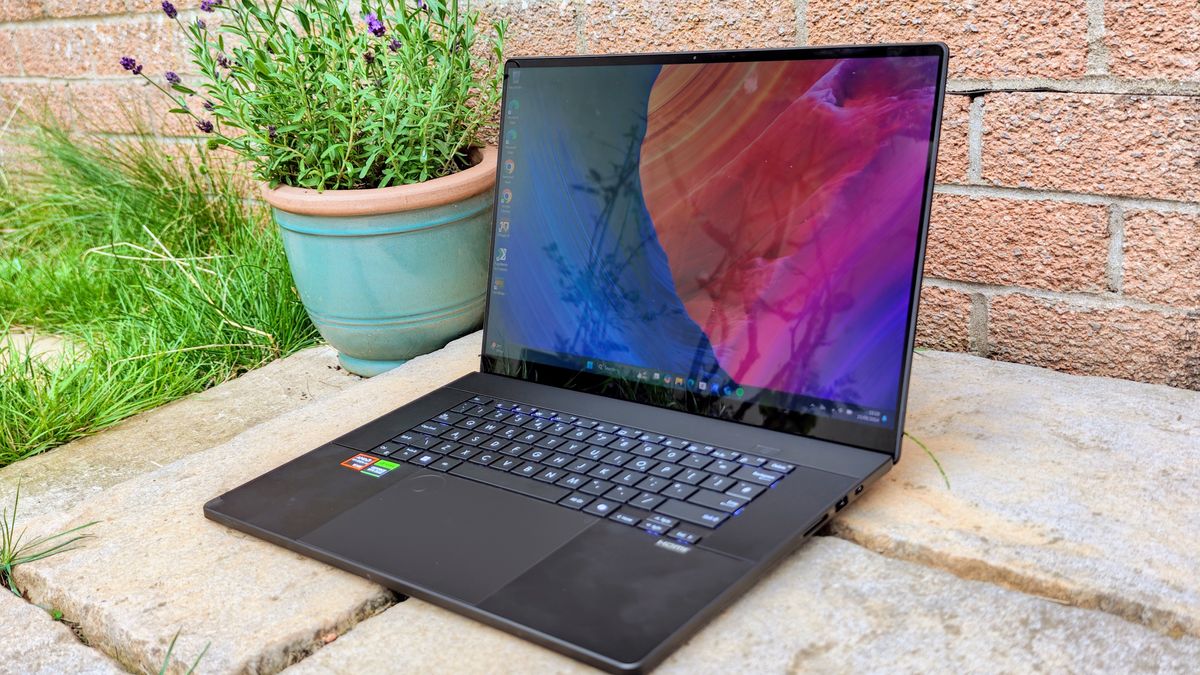As a creative professional, the choice between Mac and Windows is a huge decision to make. After all, you’re going to be using this device for many hours a day, hopefully for years to come. And both the best laptops and the best desktop computers cost quite a lot of money, so they can’t easily be replaced if it turns out you made the wrong decision.
However, there’s a lot to be said for both Windows and Mac computers, and there’s no ‘one-size-fits-all’ answer. So really, you need to think about your own personal requirements and which type of machine will likely fit you better.
To help you out, we’ll run through the pros and cons of both platforms, across a number of categories, and explore the key factors to consider when making this important decision.
Mac vs Windows: philosophies
The first thing to consider is probably the most important. Macs are only made by one company (Apple), while Windows machines are made by a variety of rival firms, including (but not restricted to) Microsoft, the makers of the Windows operating system.
The positives of this for Macs is that they’re known for their optimised performance. Apple’s control over both hardware and software makes using a Mac a very reliable and seamless experience, with smooth operation right out of the box.
The recent introduction of Apple Silicon in the form of the M1, M2 and M3 chips has further enhanced this advantage. That’s what made our reviewer call the Apple MacBook Pro M3 Max “king of the creative laptops”. Macs also come equipped with Thunderbolt ports, enabling high-speed connectivity with external devices, which is crucial for many creative workflows.
Meanwhile, the next lot of MacBook Pros featuring the next-gen M4 processor are expected any day now, which should drive things forward even more.

The downside of the control Apple exerts, though, is that it doesn’t give much choice to the consumer. You either buy a Mac computer from Apple, locking you into their ecosystem and forcing you to pay their high prices and make app compromises, or you don’t.
With a Windows computer, though, you have a host of laptop and desktop options to choose, from a wide variety of manufacturers. They’re usually much easier to upgrade and customise than Macs. If you’re short on budget, there are lots of options that are much more affordable than a Mac. And at the other end of the price spectrum, premium Windows computers often support cutting-edge GPUs, which can be beneficial for tasks like 3D rendering and video editing, not to mention hardcore gaming.
In short, for creatives who prioritise consistent performance, don’t want to do any tinkering and don’t have specialist needs, a Mac may be the better choice. However, those who want more control over their hardware, or require specific components for their creative work, may find a Windows PC more suitable.
Mac vs Windows: Software
Of course, none of this will mean much to you if you have a favourite piece of software and it won’t run on either Windows or macOS. Well-known examples include the UX design tool Sketch and Final Cut Pro, both of which only run on Macs, while most CAD software will only run on Windows computers, at least in their full-featured versions.
Consequently, our list of the best laptops for CAD and AutoCAD is dominated by Windows machines, including our number one choice, the ASUS ProArt P16.
These days, though, most industry-standard creative software is available for both Windows and macOS. This applies to every tool in the Adobe Creative Suite, as well as its budget alternative, the Affinity Suite.

Plus, of course, a lot of the best digital art software nowadays is available as a web browser app, including Canva, Figma and Adobe Express, making it entirely platform-independent.
One straightforward way to choose between Mac and Windows, then, is to check the software requirements for your specific creative field. If you rely on Mac-exclusive software, the path forward is clear. Otherwise, though, Windows generally offers more software options and flexibility.
Mac vs Windows: user interface
You’re going to spend a lot of time in either a Windows or macOS user interface, depending which computer you buy. So it’s well worth considering which one you’re likely to enjoy most, because again, these operating systems do take quite a different approach.
On the one hand, Macs are renowned for their clean, intuitive interface with a focus on simplicity. The consistent design across the OS and native applications can make it easy to use without a lot of thinking, making it easier to focus on the task in hand. MacOS also offers gestures and shortcuts optimized for creative workflows, which can really speed up your workflow if you master them.
Windows, in contrast, provides a more customisable interface. This flexibility makes it easier for you to tailor your workspace as you like it, which can be a pro or a con, depending on how much you want to tweak things.
And here’s the killer for me personally: some Windows computers, such as my Dell Latitude 9410, offer touchscreen support, which I can’t imagine now ever doing without. There are many others to choose from; indeed, the ASUS Zenbook Duo OLED 2024 comes with not one touchscreen, but two.

Apple, however, has to this date never released a touchscreen Mac. The closest you can get to that is an iPad teamed with a Magic Keyboard; but that doesn’t actually run macOS, only iOS, which is more limiting.
And that brings us to another issue: Windows offers a range of hybrid computers that run full Windows and can be used as both a tablet and a laptop, along with other cool setups like tent mode for watching movies. For options, see our roundup of the best 2-in-1 laptops, but Apple isn’t one of them, because there’s no hybrid Apple laptop.
If you’re not bothered about a touchscreen or hybrid functionality, though, it broadly comes down to this. If you prefer a streamlined, consistent interface that never changes and is easy to grasp, you’ll probably prefer macOS. If you want to customise your workspace to fit your specific workflow, though, Windows could be more appealing.
Mac vs Windows: display
Display quality and colour accuracy are vital for a range of visual professionals, including illustrators, designers, photographers, motion designers, UX designers, video editors and 3D artists.
MacBooks have a great track record here, thanks to their Retina displays, which offer high resolution and excellent color accuracy. Newer models also come with built-in color profile management and support for the P3 wide color gamut, ensuring consistent and accurate color representation crucial for design and video work. This is one of the main reasons that the Mac is generally the standard go-to for creative businesses, from publishing companies to photo studios to design agencies.
Because Windows is not tied down to one manufacturer, though, you can find a wider variety of display options among laptops and PCs that run it, including high-end 4K and 8K monitors. This diversity allows you to choose a display that best suits your specific needs and budget.
At the same time, of course, there’s nothing to stop you buying an external monitor for your Mac that isn’t made by Apple. Indeed, even if you have a MacBook that comes with its own screen, you can still do so. So in this respect, the difference between Mac and Windows is actually not that great. Our guide to laptop displays explains further.
Mac vs Windows: ecosystem
Once upon a time, a computer was seen as a distinct, separate entity. Nowadays, it’s all about connecting it up to other things. And especially if you have an iPad, an iPhone user and/or an Apple Watches, you’ll value their seamless integration with Macs. Features like Handoff, AirDrop and Universal Clipboard enhance make it easy to transfer work, messages and ideas between devices, while the iCloud provides easy file syncing and sharing across the Apple ecosystem.

Conversely, Windows systems, while not as tightly integrated as the Apple ecosystem, offer better integration with Android devices and Microsoft services. OneDrive is the equivalent of iCloud, providing robust cloud storage and collaboration features, while the Windows Your Phone app offers improved mobile integration for Android users.
In other words, if you’re already invested in the Apple ecosystem, a Mac will offer the most seamless integration. For those using Android devices or heavily reliant on Microsoft services, though, Windows might be more convenient.
Mac vs Windows: Security
Dealing with valuable intellectual property, either your own or your clients? Macs are generally considered more secure due to the lower prevalence of malware targeting the system. That’s partly because Apple’s tech is harder to break into (thanks to the tight control the company has over its ecosystem) and partly because the hackers are less motivated (as Apple users are vastly outnumbered by Windows and Android users globally).
That said, while Windows systems are historically more vulnerable, it has made significant strides in security over recent years. Microsoft provides frequent security updates to address a wide range of threats, and the built-in Windows Defender now provides robust protection.
We’ll be honest, though: Macs require less active management of security threats, and are probably safer overall.
Mac vs PC: Industry preferences
Beyond this general advice, we’d be lying if we didn’t say that certain creative professions didn’t favour one platform over the other. And whether that favouritism is justified or not, there’s often an advantage to going with the crowd. It means, for example, that if you partner with another creative in your field, they’re more likely to speak your language, or if you go for a job, you’re more likely to meet the skill requirements.

On the whole, it’s our experience that graphic designers, designers and publishing companies prefer Macs, due to historical reasons and notions of “what’s cool” as much as anything else. Conversely, for 3D modelling and animation, Windows is generally preferred due to better compatibility with 3D software and powerful GPUs. However, Macs are gaining ground in this area with the Metal API and the performance improvements of Apple Silicon.
For video editing, Macs have a strong reputation their smooth handling of 4K and 8K footage, plus it’s the only way to run Final Cut Pro, although this is starting shift with the increasingly popularity of Premiere Pro, which runs on both platforms.
These are all sweeping generalisations, of course. But at the same time, we’d challenge anyone to prove that they weren’t still broadly true.
Making your decision
So how do you decide between a Mac and a Windows PC? Start by making a list of essential software for your work and check compatibility with both platforms. Next, consider your budget and compare the options available on both platforms within your price range.
Evaluate your workflow and think about which system aligns better with your process. If possible, try out both systems with your typical workload to see which feels more comfortable. Think long-term about future upgrades, maintenance, and how your needs might evolve.

Consider how well each system would integrate with your other devices and services. Determine if you need cutting-edge performance for tasks like 3D rendering or if a more balanced system would suffice for your work.
Ultimately, the right choice depends on your specific needs, preferences, and working style. There’s no right answer between Mac and Windows. The only answer is to decide which is right for you. Need more advice? See our iPad Pro vs MacBook Air guide.
